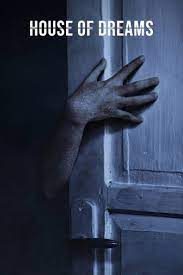
Lee (Robert Berry) is a writer. He has been working on a story for, what seems like forever, but is plagued with a severe case of writer’s block and constant headaches. He also has strange dreams at night. His book is about an old mansion in the area. It is the same house that Lee has been dreaming about.
Lee’s wife, Elaine, had been in a sanitarium trying to deal with alcoholism. Since she has returned, the relationship has been a little strained. Lee is obsessed with his story to the point where he has been neglecting Elaine.
In his dreams he drives to the house and walks through its dilapidated rooms. One night he dreams that his friend Ted drowned in the open well at the house. The next day he gets a call telling him that Ted had a car accident and his car flipped over in a stream drowning him. The event unhinges Lee a little more. Now he is obsessed with the house and terrified of it at the same time. As Lee’s obsession deepens the relationship between him and Elaine grows weaker. His dreams begin to look like a portent into the future. Lee’s fractured hold on reality is put to the test.
“House of Dreams” was released in 1963 and was written, produced, directed and stars Robert Berry. Berry was a student at Indiana University when he made the film. It is an ultra-low budget, black and white, horror mystery and a psychological thriller. It is mostly a regional film that was shot in Decker and Vincennes, Indiana. The film is a little on the obscure side. As far as I know it only showed once in an Indiana theater. I believe Sinister Cinema and Alpha Video have it in their catalogues.
The movie is a strange and somewhat creative film. It is very expressionistic and is reminiscent of other experimental films like “Daughter of Horror” 1955 or “Carnival of Souls” 1962. There are some nice camera angles and the way the opening credits are done is an interesting idea. They look like graffiti scribbled on different surfaces of the house. The copy of the film that I have, however, is pretty crappy so you can’t really see a lot of them clearly.
There are drawbacks to the movie as well. The low production values are obvious. Because of that the sound isn’t all that good or consistent. There are sections with sound, sections where it is silent, and a few sections where the sound was added in post. The pacing dragged at times and the acting wasn’t all that great. Still there is something compelling about the film. Let’s just say, it’s not for everyone.
There is a re-scored version of the film done by Jason Coffman, but I haven’t seen it. There is also a better copy of the film on the Indiana University Cinema Archives site.

